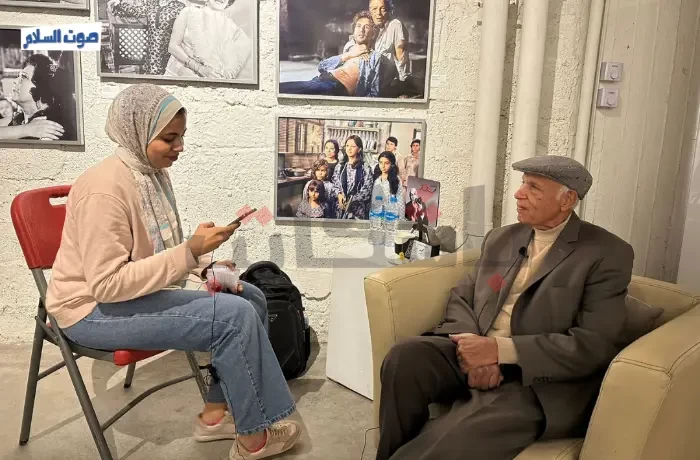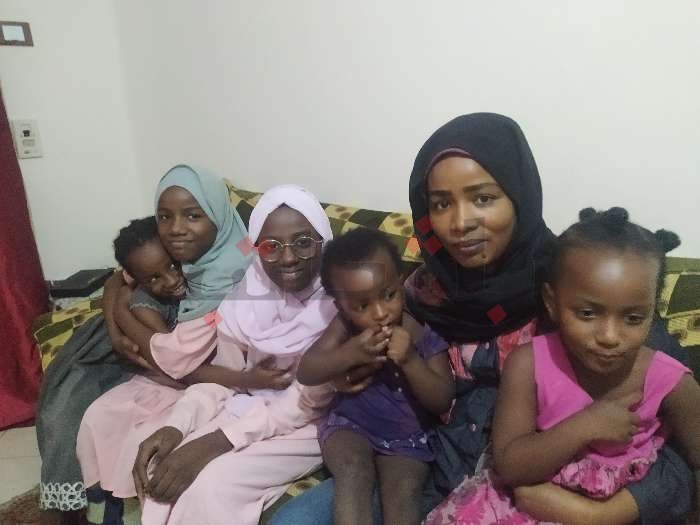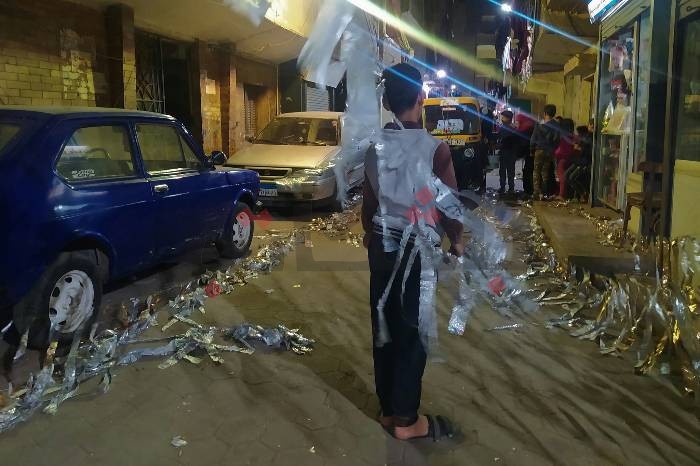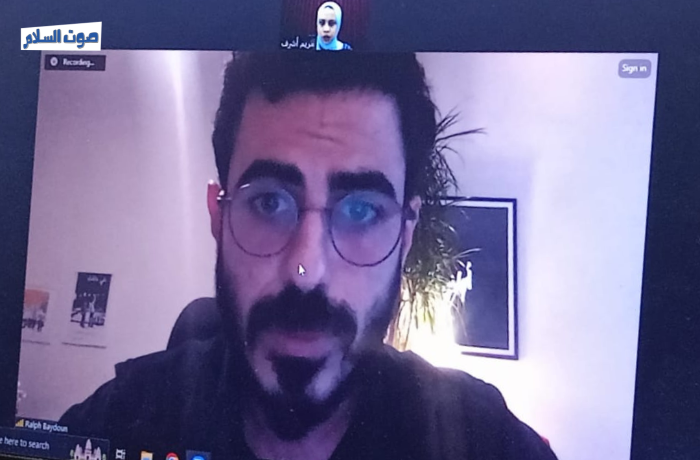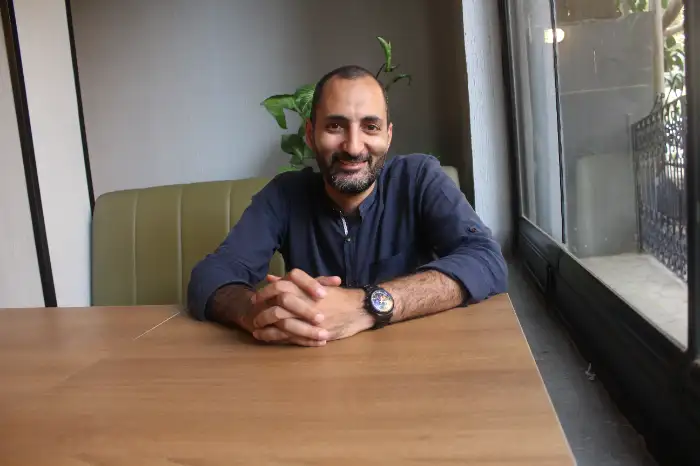Through the lens of an unknown soldier named Mohamed Bakr, a hidden world behind the camera comes to life. His remarkable ability to capture and document timeless scenes from Egyptian cinema has unveiled a realm that remained unseen by many. These unforgettable frames tell a compelling story of a special world, immortalised by Bakr’s exceptional talent.

Born in 1937, Mohamed Bakr earned the title “Sheikh of Cinematographers” after having a career spanning more than 60 years, admired for his exceptional work in documenting some of the most significant pieces of Egyptian cinema. Bakr used his camera to create a unique and magical imprint on numerous films, including “The Hunger,” “Yacoubian Building,” and “People on the Top.” His cinematic portraits and other photographs have become cherished pieces that people continue to share and admire.
On the sidelines of 50 Years of Cinematic Portraits Exhibition, showcasing the most important frames and photographs captured by Mohamed Bakr, including about 100 frames from 80 films, Sout Al-Salam interviewed the cinematographer about how he entered the world of cinema, and his love for each frame he took, as well as his most favourite films.

How did you first get started in the film industry?
My father was King Farouk’s private photographer, as well as Talaat Harb and Om Kolthoum’s, this encouraged me to take interest in photography in general, and what attracted me to cinematography specifically. After finishing high school, I refused to join the police academy and joined the cinema institute instead.
The first shooting location I worked in with my father was for the song “Kol Dah Kan Leih” by the late Mohamed Abdulwahab. I vividly recall the singer’s words to me: “I’m glad two generations took my photos, your father and now you”, this moment marked the beginning of my true journey in the world of cinema.
How do you feel about showcasing your frames in the 50 Years of Cinematic Portraits Exhibition?
I found it an opportunity to let two generations meet, the old with the new, as well as archiving my 60-years work, as well as documenting the works of the last generation. I didn’t expect so many to attend, or this positive impact of the exhibition. So many praised the exhibition and my works in it.

What were the biggest challenges you encountered during your cinematic career?
In the past, I encountered numerous challenges due to limited resources and technology. Developing the colours for a single frame could take up to five days. During the 1950s and 1960s, Egypt experienced shortages of paper and acids needed for images, which significantly slowed down the filmmaking process. It could take months to complete a single film until economic liberalisation helped resolve this issue.
Another challenge was fostering trust among actors and filmmakers. Filmmaking is an intimate process that demands friendliness and mutual trust between you and the protagonist of your picture. I struggled with this for years, but I focused on building strong bonds with the actors. Eventually, my efforts paid off, and my archive became filled with vibrant and natural photos of filmmakers.
For 60 years, what did you depend on in your career?
I believe that my career depended on patience and energy; despite all challenges, I’m trying to build a live cinematic archive, as the cinematographer is the basis of the camera’s movement and frames in films. The characters and elements needed to be positioned at the end of each frame in a process known as “the beginnings.” These images were also productively used to promote and market the film in cinemas.

Who was your favourite actor or actress to photograph, and why?
Soad Hosny was the one, my archive was filled with her photos, and most of the fans’ favourites are taken by me. She was open and classy, she used to respect the photographer and appreciate their job and the importance of standing behind the camera, she listened to instructions well, so all her photos came out cheerful, impulsive, and resembling her true self.
What are your thoughts on contemporary cinematic frames, and how well do they represent social classes?
Filmmakers today often overlook the true value of technology. Despite the advancements making things easier, it’s rare to find frames that convey deep meaning or purpose. Modern films and TV series involve large crews, sometimes exceeding 100 people, unlike the past when around 20 people worked together, fostering a unified vision and simpler decision-making.
As for social classes and simulating life in the “compounds”, this is the writers’ problem; the hero from the slums character is nearly non-existent now, there are attempts to obliterate this class. Writers and producers are responsible for this, and currently there is no film that would stick to the minds of the audience; there are no iconic characters presented like “Zuzu” impersonated by Soad Hosny in “Watch Out for Zuzu” film.

What advice do you have for new cinematographers?
Create valuable pictures documenting each film, until you create a respectable archive for the Egyptian cinema. Hone your skills through studying and listening to your seniors in the field, making the utmost use of their experience.
What do you wish for Egyptian cinema during the next few years?
I hope that the Ministry of Culture and the Syndicate of Cinematographers will recognise the value of my archive and establish a museum for these works. This isn’t for my benefit, but for the lovers of cinematography. Although several institutions in the Gulf countries have offered me substantial sums to sell this archive, I have refused because Egypt, as the birthplace of cinema in the Middle East, deserves this opportunity.
I contributed to enriching this archive by meticulously documenting each photo with details such as the product name, date, time of the shoot, and the circumstances under which it was taken. I aspire to create an exhibition in honour of my father, Hussien Bakr, showcasing his collection of photos from the 1930s and 1940s. His archive includes remarkable pictures of the great Abdulwahab and Om Kolthoum, capturing their concerts and moments.
